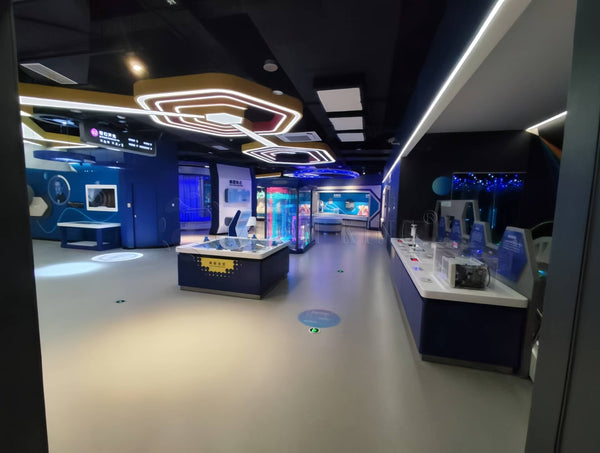Interactive Learning Center: Blending Science and Design for Youth Education

Introduction
At the heart of every Interactive Learning Center lies the perfect synergy between science and interactive design, tailored specifically to inspire young learners. These thoughtfully crafted exhibits not only educate but captivate children, turning the learning process into an engaging and memorable experience. By integrating beautiful design with hands-on interaction, these exhibits cater to the curiosity and learning needs of children, making science approachable and enjoyable.
How Interactive Learning Centers Foster Education Through Design
The power of an interactive learning center lies in its ability to blend aesthetics with functionality. Here’s how this innovative approach benefits young learners:
-
Hands-On Interaction: Students get the opportunity to engage with science by manipulating objects, conducting experiments, and seeing the results firsthand. This tangible approach helps concepts “stick” in ways traditional learning cannot.
-
Engaging Design: Every exhibit is designed with an elegant and visually appealing framework, ensuring that it captures the attention of both children and adults. This enhances focus and promotes prolonged engagement with educational material.
-
Interactive Technology: By incorporating cutting-edge technologies such as touchscreens, sensors, and augmented reality, interactive learning centers allow children to delve deeper into scientific concepts in an exciting and immersive environment.
Why Children Love Interactive Learning Centers
Children find interactive learning centers fascinating because they turn learning into an adventure. Here are the main reasons these spaces are so appealing:
-
Active Engagement: Kids love how they can actively explore exhibits, rather than passively receiving information. This gives them control over their learning experience, making it more personalized and fun.
-
Exploration and Discovery: Each exhibit encourages exploration, allowing children to discover new ideas and concepts at their own pace. The element of surprise and discovery is one of the reasons children find these spaces irresistible.
-
Creative Thinking and Problem-Solving: Many exhibits challenge children to think critically, solve problems, and come up with creative solutions, reinforcing important life skills while they’re having fun.
The Educational Impact of Interactive Learning Centers
Interactive learning centers are designed to enhance educational experiences and outcomes for young learners. Here’s how they create a lasting impact:
-
Enhanced Knowledge Retention: By making learning a multisensory experience, children remember scientific concepts more effectively. Engaging directly with educational material through touch and interaction leads to stronger retention of key ideas.
-
Development of Critical Thinking Skills: Interactive exhibits encourage children to analyze, experiment, and evaluate. They develop critical thinking skills while solving problems and answering questions posed by the exhibits.
-
Encouragement of Curiosity: Children are naturally curious, and interactive learning centers tap into this curiosity by presenting science in a way that is fascinating and approachable.
Examples of Interactive Exhibits in Learning Centers
Several interactive exhibits stand out for their ability to seamlessly blend education with fun, making them ideal for interactive learning centers:
-
The “Water Cycle Explorer”: Children can manipulate the various phases of the water cycle, observing how water transforms from vapor to liquid and back again. This interactive exhibit makes a complex concept simple and engaging.
-
The “Electromagnetic Levitation”: Through magnetic forces, kids can make objects float, teaching them the basics of magnetism in a fun and hands-on way.
-
Energy Efficiency Challenge: An exhibit that allows children to create their own energy-efficient homes by selecting different power sources and building materials, demonstrating the importance of sustainability.
Conclusion
Interactive learning centers offer an incredible opportunity to blend science with engaging, hands-on exhibits designed to inspire curiosity in young learners. By providing an immersive, fun, and educational environment, these centers make science accessible and enjoyable for children, helping them develop a lifelong interest in learning. With an emphasis on creative design and interactivity, these exhibits captivate the imagination and stimulate critical thinking.
